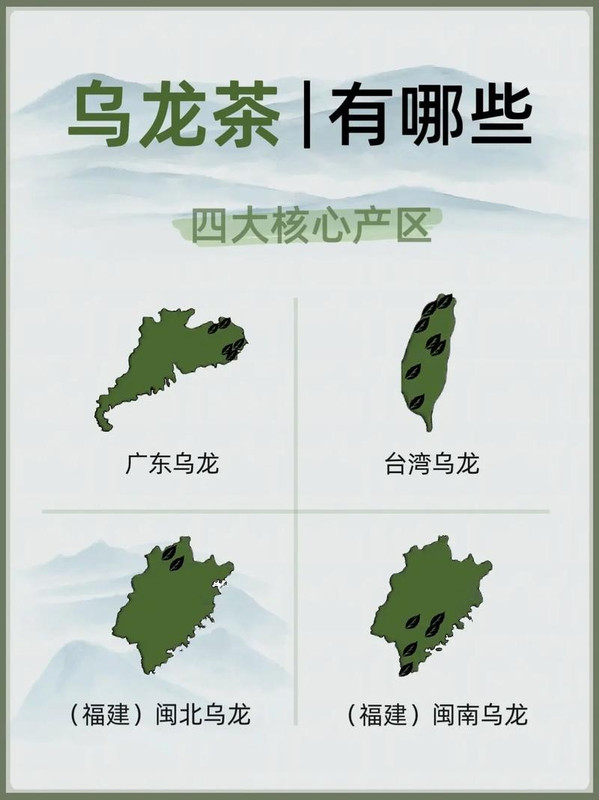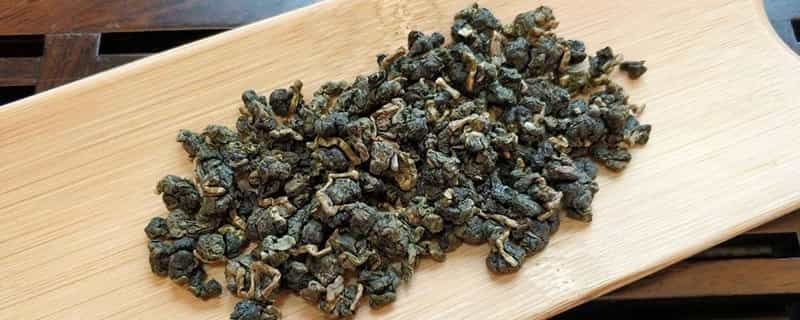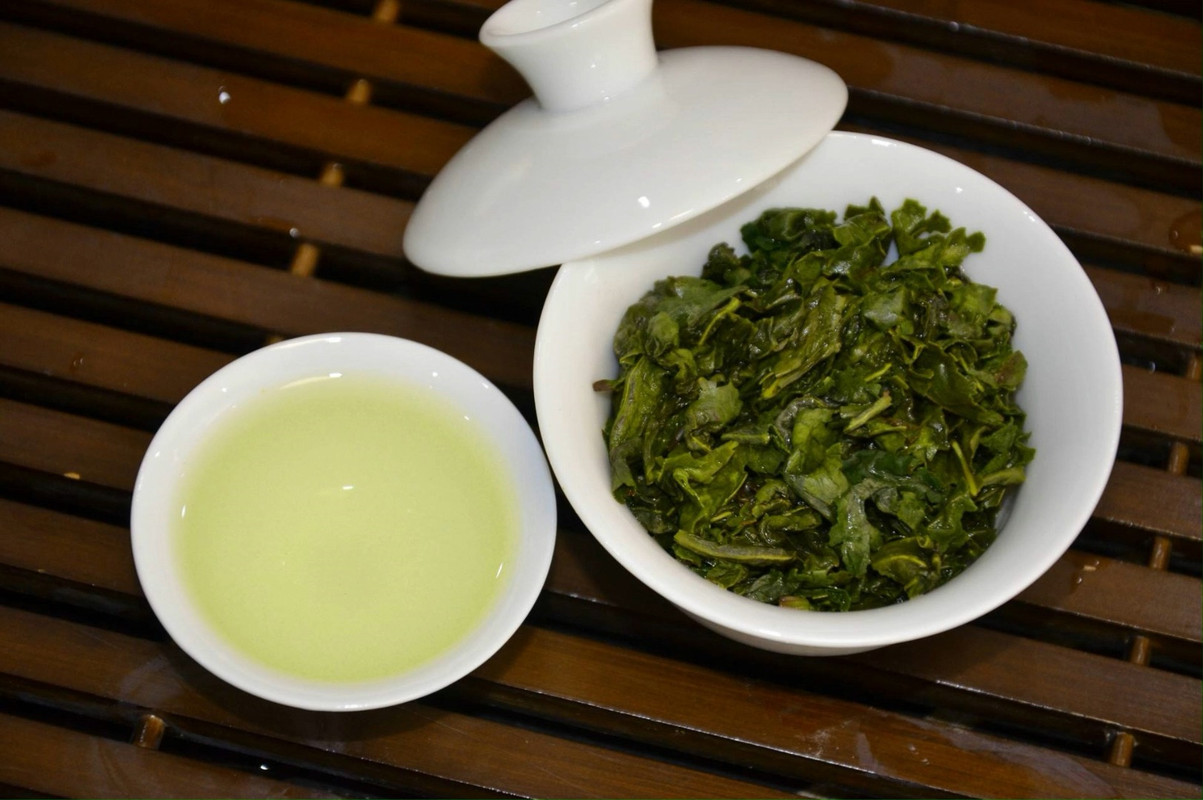Oolong tea, also known as Qingcha, is a semi-fermented tea with a fermentation degree ranging from 15% to 70%, making it a unique category between green and black teas. Originating in Fujian Province, oolong tea has since spread to Taiwan and Guangdong, and now boasts a wide geographical distribution across China. This article explores the main producing areas, growing environments, and varietal characteristics of Chinese oolong tea.

Main Producing Areas
Oolong tea is primarily produced in Fujian, Guangdong, and Taiwan provinces. Based on the region of origin and quality style, oolong tea can be classified into four major categories: Northern Fujian Oolong, Southern Fujian Oolong, Guangdong Oolong, and Taiwan Oolong.
- Northern Fujian Oolong
- Main Producing Regions: Wuyi Mountain area in Fujian Province, including Chong’an (except Wuyi Mountain), Jian’ou, Jianyang, and Shuiji.
- Representative Teas: Da Hong Pao, Tie Luohan, Bai Ji Guan, Shui Jin Gui, Wuyi Rou Gui, Wuyi Shui Xian, Minbei Shui Xian, and Baimao Hou.
- Growing Environment: Located at an altitude of 200 to 450 meters, Wuyi Mountain is shrouded in mist for about one-third of the year, with a humid climate and acidic sandy soil, ideal for tea cultivation.
- Southern Fujian Oolong
- Main Producing Regions: Southern Fujian, including Anxi, Yongchun, and Nan’an.
- Representative Teas: Anxi Tie Guan Yin, Anxi Huangjin Gui, Yongchun Fo Shou, and Anxi Sezhong.
- Growing Environment: Anxi, represented by Xiping, Xianghua, and Gande, boasts superior growing conditions, resulting in high-quality tea.
- Guangdong Oolong
- Main Producing Regions: Chaozhou, especially the Wudong Mountain area.
- Representative Teas: Fenghuang Shuixian, Fenghuang Dancong, Langcai, Lingtou Dancong, and Shiguping Oolong.
- Growing Environment: Wudong Mountain, with an altitude exceeding 1,000 meters, abundant rainfall, and a mild climate, provides an excellent environment for tea cultivation.
- Taiwan Oolong
- Main Producing Regions: Taipei, Taoyuan, Hsinchu, Miaoli, Yilan, and Nantou.
- Representative Teas: Wenshan Baozhong and Dongding Oolong.
- Growing Environment: Taiwan’s unique growing environment contributes to the excellent quality of its oolong tea.
Growing Environment
The growing environments for oolong tea share some common characteristics across the main producing areas. These include:
- Climate: Subtropical oceanic monsoon climate with abundant rainfall, sufficient sunlight, and an annual average temperature of 17-21°C.
- Altitude: Generally, high-altitude areas are preferred for tea cultivation, as they provide cooler temperatures, larger diurnal temperature variations, and a longer growing season, contributing to better tea quality. However, low-altitude areas with suitable growing conditions can also produce high-quality oolong tea.
- Soil: Acidic sandy loam or rocky soil with good drainage and fertility is ideal for tea cultivation. The soil in Wuyi Mountain, for example, is rich in minerals and humus, contributing to the unique “rock essence and floral aroma” of Wuyi Rock Tea.
Varietal Characteristics
Oolong tea varieties differ in appearance, aroma, and taste based on their region of origin and fermentation degree. Some notable characteristics include:
- Northern Fujian Oolong: Known for their “rock essence and floral aroma,” these teas have a dark brown appearance, high and lasting aroma, and a mellow and thick taste.
- Southern Fujian Oolong: Represented by Tie Guan Yin, these teas have a fragrant orchid aroma, a fresh and mellow taste, and a greenish-brown appearance.
- Guangdong Oolong: Fenghuang Dancong, in particular, is renowned for its unique floral aroma and rich, smooth taste.
- Taiwan Oolong: Dongding Oolong, for example, has a golden-yellow tea soup with a strong fruity or floral aroma and a mellow, sweet taste.
Conclusion
Chinese oolong tea, with its rich variety and unique charm, is produced across multiple regions in China. Each producing area contributes its unique terroir, production techniques, and cultural heritage to the final product, resulting in a diverse range of oolong teas. Whether it’s the “rock essence and floral aroma” of Northern Fujian Oolong or the fragrant orchid aroma of Southern Fujian Oolong, Chinese oolong tea continues to captivate tea enthusiasts worldwide with its exquisite taste and health benefits.



